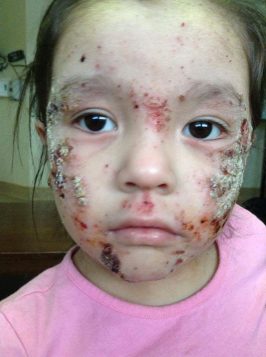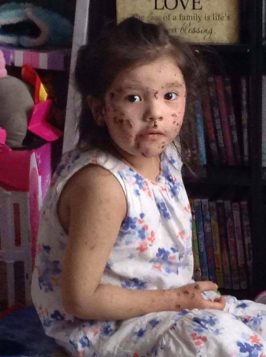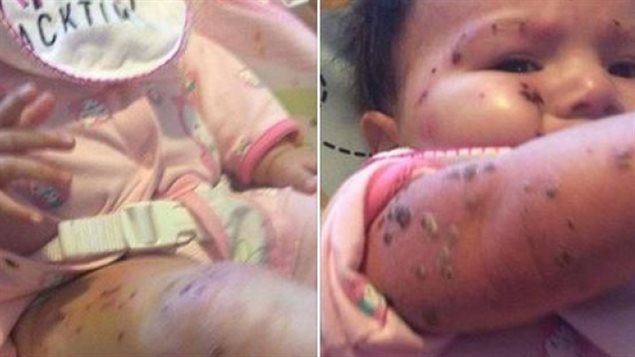Doctors are still trying to figure out what is causing an outbreak of skin lesions among children in an Indigenous community in Northern Ontario.
Medical workers have gone door-to-door in Kashechewan and have identified 18 children ranging from toddlers to mid-teens suffering from severe rashes and sores.
At least three children have been flown out of the remote community for treatment in hospitals in Moose Factory, Timmins and Kingston. Three other children are being monitored in case they need outside treatment.
 Keith Conn, associate deputy minister of First Nations and Inuit Health, said the diagnoses so far are scabies, mild impetigo and eczema.
Keith Conn, associate deputy minister of First Nations and Inuit Health, said the diagnoses so far are scabies, mild impetigo and eczema.
“The photos are alarming and disturbing but that doesn’t represent the community, according to Dr. Green, [who] saw all the children. They’re at various levels of severity and infections. Some are milder than others,” Conn said in an interview with CBC News.
“There is a treatment regime in place.”
He noted that, in some cases, when eczema is not treated in a consistent way, it can be exacerbated.
“It can be very unappealing — as in the photos shared on Facebook,” Conn said.
“But according to Dr. Green they’re not representative of the individual cases that he’s seen thus far.”
Water fears
Conn did not want to speculate on what might be causing the outbreak, but he ruled out the community’s water system as a possible culprit.

Some children in Kashechewan First Nation have developed rashes and even painful sores on their bodies. Tasheena Wesley
“The community has been concerned about the water quality issues as being a link or a cause, but there’s been no evidence of such and the community has a regular testing of water quality,” Conn said. “They have a water plant that is functioning to standard.”
Alvin Fiddler, grand Chief of the Nishnawbe Aski Nation, which includes Kashechewan, said there is deep mistrust of the community’s water treatment system.
“I think one of the immediate things that we’re seeking is for an outside independent team to go to assess their water treatment plant, to attest the quality of their water, to assure the community that if it’s safe, it’s safe for them to drink, and also to continue those house-to-house visits to ensure that other children that may be at risk are getting the attention that they need,” Fiddler said in an interview with CBC News. “And if they need evacuated, they are evacuated but at the same time working on longer term solutions for the community.”
With files from CBC News and The Canadian Press







For reasons beyond our control, and for an undetermined period of time, our comment section is now closed. However, our social networks remain open to your contributions.